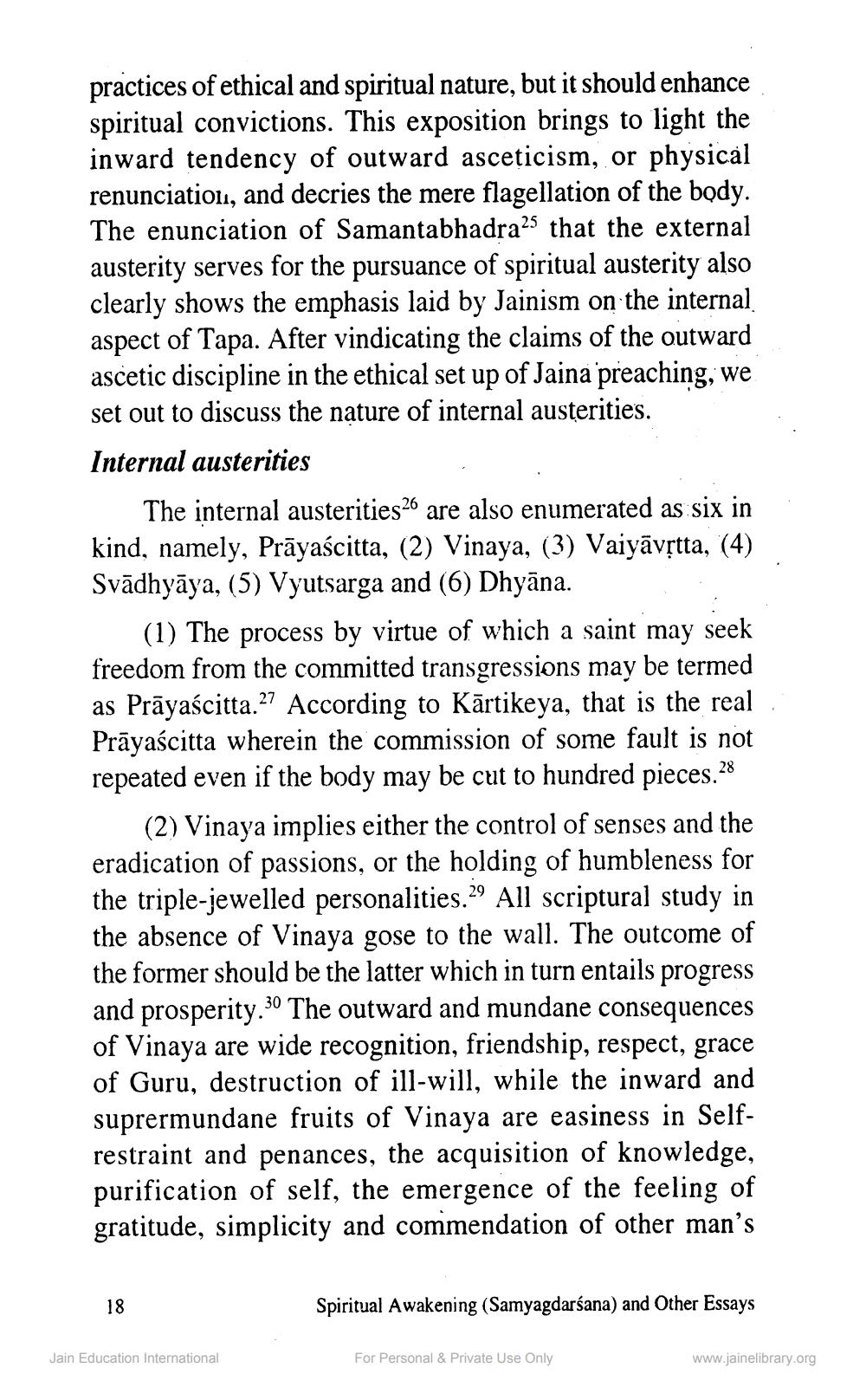________________
practices of ethical and spiritual nature, but it should enhance spiritual convictions. This exposition brings to light the inward tendency of outward asceticism, or physical renunciation, and decries the mere flagellation of the body. The enunciation of Samantabhadra25 that the external austerity serves for the pursuance of spiritual austerity also clearly shows the emphasis laid by Jainism on the internal aspect of Tapa. After vindicating the claims of the outward ascetic discipline in the ethical set up of Jaina preaching, we set out to discuss the nature of internal austerities. Internal austerities
The internal austerities26 are also enumerated as six in kind, namely, Prāyaścitta, (2) Vinaya, (3) Vaiyāvstta, (4) Svādhyāya, (5) Vyutsarga and (6) Dhyāna.
(1) The process by virtue of which a saint may seek freedom from the committed transgressions may be termed as Prāyaścitta.27 According to Kārtikeya, that is the real Prāyaścitta wherein the commission of some fault is not repeated even if the body may be cut to hundred pieces.28
(2) Vinaya implies either the control of senses and the eradication of passions, or the holding of humbleness for the triple-jewelled personalities.29 All scriptural study in the absence of Vinaya gose to the wall. The outcome of the former should be the latter which in turn entails progress and prosperity.90 The outward and mundane consequences of Vinaya are wide recognition, friendship, respect, grace of Guru, destruction of ill-will, while the inward and suprermundane fruits of Vinaya are easiness in Selfrestraint and penances, the acquisition of knowledge, purification of self, the emergence of the feeling of gratitude, simplicity and commendation of other man's
18
Spiritual Awakening (Samyagdarśana) and Other Essays
Jain Education International
For Personal & Private Use Only
www.jainelibrary.org




